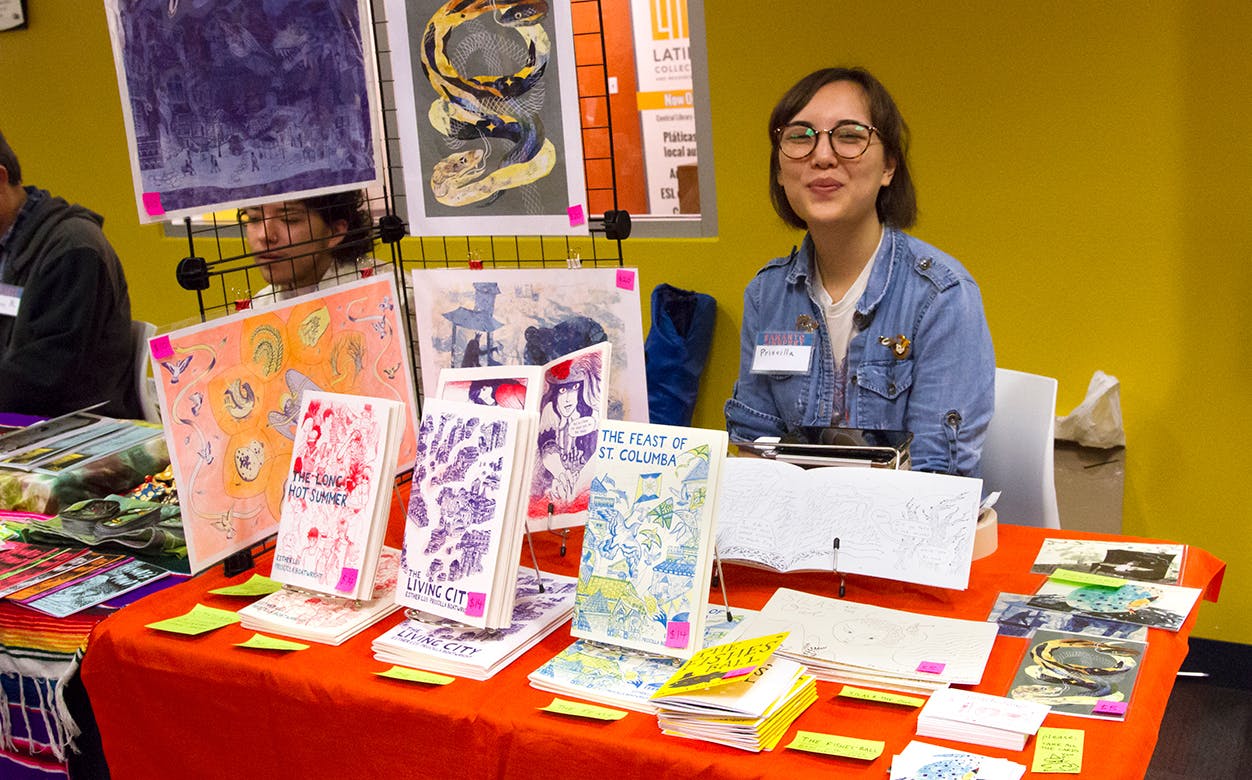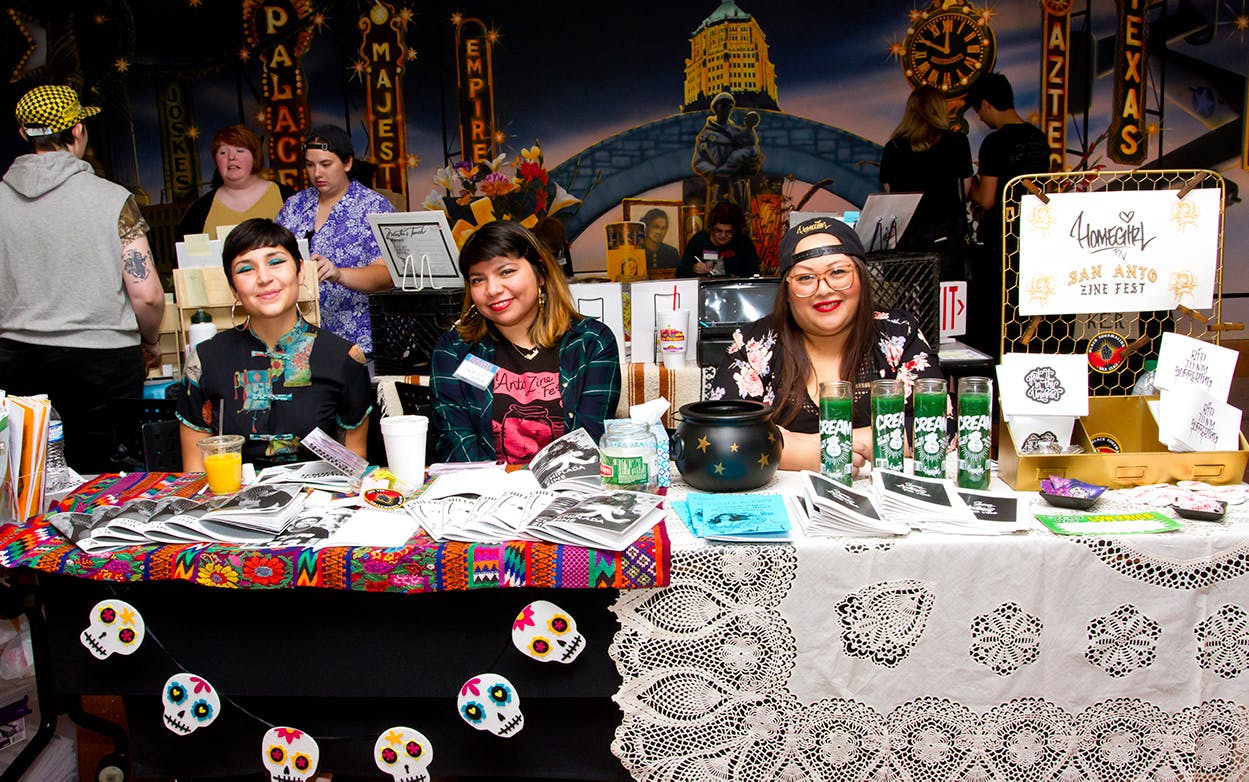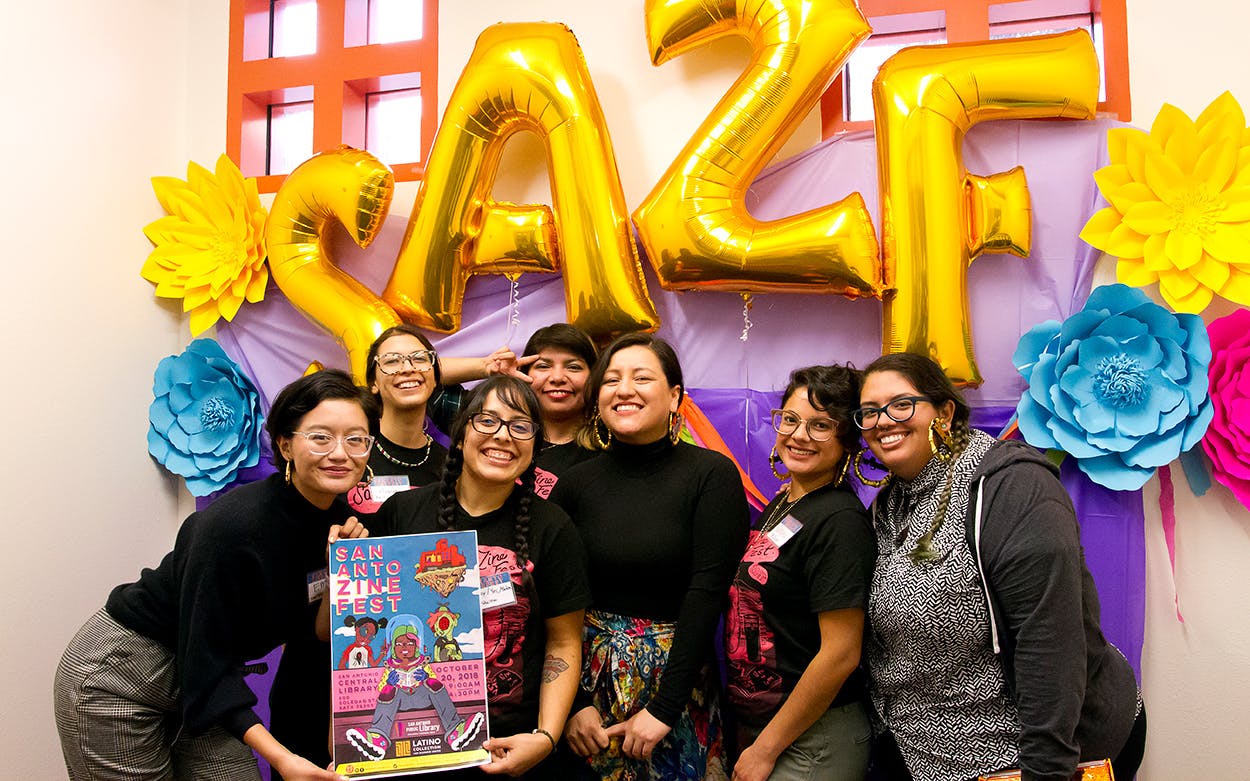In a zine’s pages, a coming-of-age story can live next to poetry about reproductive health rights and comics about immigration. Zines, short for self-published magazines, first emerged from countercultural circles who had something to say—and their relative accessibility has solidified them as linchpins of do-it-yourself scenes for decades.
Zines have seen an uptick in popularity in recent years, finding a home beyond social media: Even larger institutions, such as public libraries, have been increasingly adding zines to their collections. One of these is a Texas-based feminist zine titled St. Sucia, which is dedicated to “exposing what it is to be a mujer.” Beyond publishing fourteen issues and counting, the creators of St. Sucia have been directly invested in helping the zine scene evolve in San Antonio. Joined by other local zine makers, this group is deconstructing the idea of traditional art havens through paper, staples, and a lot of hustle. “We want this space to exist so we’re just going to make it,” says Natasha Hernadez, a writer, nurse, and co-publisher of St. Sucia.
Hernadez works closely with San Antonio-based artists and zine-makers including Isabel Ann Castro, illustrator and co-publisher of St. Sucia, and the visual artist and co-publisher of Yes Ma’am Zine, Suzy González. Ana Ortiz is a local poet and co-publisher of La Liga Zine, while Isabel Zepeda is a visual and sound artist who helms co-publishing duties at La Liga Zine. Their zines revolve around challenges of higher education, colorism in Latinx communities, feminism and veganism. Intimate narratives on navigating gender expression, and exploring sexual identity coexist alongside each other, while collaborators from around the world contribute photography, illustrations, and comics.

The creative brains producing San Antonio’s boldest zines are also gearing up to host the San Anto Zine Fest, the largest gathering of its kind the city has ever seen, on October 5th at the San Antonio Public Library. Now in its third year, the festival is poised to draw 1500 people, and about 100 zine exhibitors—69% of whom are first-timers—will be presenting their creations there.
The festival organizers originally met while attending some of the largest zine festivals in the country, including Chicago Zine Fest, L.A. Zine Fest, and Zine Fest Houston. Mutual admiration for each other’s work pulled the organizers together when they returned home to San Antonio, and what started as informal conversations at Hernandez’s house led to discovering a collective desire to use what they’d learned at zine festivals to create a new experience for their community.
In recent years, women-led initiatives in San Antonio, like AnArte Gallery and the nonprofit ArtPace, have been increasingly showcasing emerging local artists and community-based work. Inspired by changes around the city, the group decided to collectively create a space in their hometown that pulled from DIY ethos of zine culture. Through the St. Sucia issue release parties, Castro says she and Hernandez started to learn more about the logistics of event planning—and given their many years of collectively going to zine festivals, they had a sense of how they ran. “No one else was going to organize this, and we’re always running into each other,” laughs Castro.

During the festival’s first year in 2017, the organizers had to fight to earn respect, especially in establishing zines as a valid art form. The organizers struggled to secure funding, access to spaces to hold the event, and food vendors who underestimated them. “Our work is about creating something new and that’s hard for folks to grasp sometimes,” says González.
Now in its third iteration, the festival has found a new home with an institutional partner: The San Antonio Public Library (SAPL) and the Latino Collection & Resource Center. Emma Hernández, Program Manager for SAPL’s Latino Collection & Resource Center, says the festival has been critical to fostering the diversity of San Antonio’s Latinx community. “Zine-making enables Latinxs to share their unique perspectives and create empowering spaces for their voices to be heard,” she says. “In a city like San Antonio, where over 65% of residents self identify as Latin… zines are tools to uplift voices who may not be part of the hegemonic Latinx narrative: Queer Latinxs, trans Latinxs, Afro Latinxs, Central Americans, undocumented Latinxs, and more.”
As the San Anto Zine Fest grows with each year, its primary goal remains rooted in creating “a space where people can share their voice, their perspectives and their talents through their zines without needing a publisher to approve them,” says González. “From day one when we were organizing the festival, we were just women of color who make zines,” adds Natasha Hernandez. “We need to be sure that we’re making space for other people of color who make zines, for other women who make zines. So we’re not just lifting up ourselves, but we’re lifting up our whole community.”
- More About:
- Art
- San Antonio






